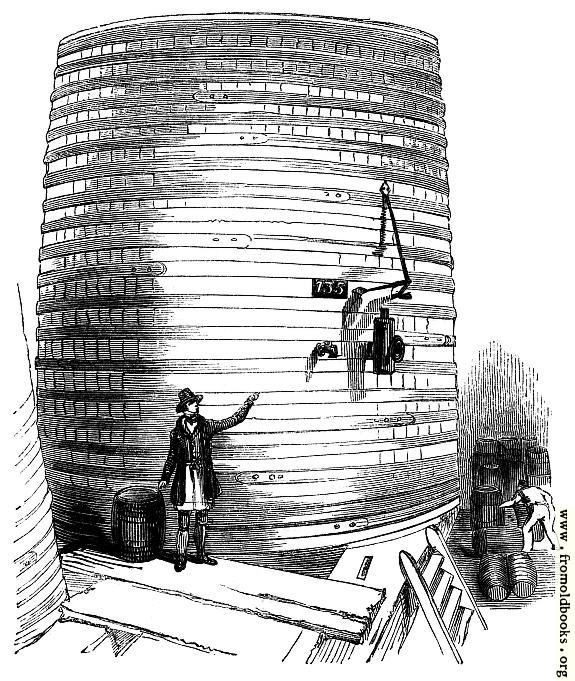I like stories about the history of beers. For me, the interesting side
of it comes when there’s a human element: why a brewer decided to do this or
that; how the drinkers liked the beer; where they drank it; processes which
brewers went through.
So when looking through The Curiosities of Ale and Beer by John Bickerdyke, first published in 1889, I
was excited to read that an alternative origin for porter is written (thanks to
Mark from Real Ale Reviews who found it). It’s probably the most unusual and
outrageous origin of a beer I’ve heard…
It first points back to Ralph Harwood in 1730. As he “brooded over the
inconvenience and waste occasioned by the calls for the ‘three threads’, which
become more and more frequent, he conceived the idea of making a liquor which
would combine in itself the several virtues of ale, beer, and twopenny.” So he
brewed a drink called Entire or Entire Butts which was tasted and approved and “became
the fruitful parent of a mighty offspring.”
So far nothing unusual, a perfectly acceptable beginning for London’s
famous dark beer. But it continues, a little off-piste:
Visitors to the great brewery in Brick Lane are shown a hole from which steam issues to the accompaniment of awful rumbling noises. ‘In there once fell a man,’ they are told – ‘a negro. Nothing but his bones were found when the copper was emptied, and it is said that the beer drawn off was an extraordinary dark colour. Some say this was the first brew of porter.
Yes. It actually says this.
Asked the obvious question, the brewery guide replied: “Oh yes… we soon
learnt how to make it without the negro.” Which is of some relief, no doubt.
The author adds his thoughts, although the tone is a little wishy-washy
and unconvinced (italics are mine): “We must confess that we have some doubts as to this account of the
origin of porter. We do not believe that
brew could have been much darker on account of the accident, though no
doubt, under the circumstances, it contained plenty of ‘body.’”
Two pages later is a versed legend called Patent Brown Stout. You must read it.
Not your usual beer history lesson…


er....!?!?!?!?!?!!? I must say, great find!
ReplyDeleteGood Lord. That's remarkable.
ReplyDeletegood god
ReplyDelete“Oh yes… we soon learnt how to make it without the negro.”
But doesn't that imply that there was a length of time where the "negro" did need to be added?
I'll forgo the obvious jokes about other beer styles like Wit, etc.
Hi you are doing a great job. i was looking for this information. i found it on your page its really amazing. I like that information. I am sure that these are your own views. They are really awesome. You are really fantastic. Thanks Why didn’t I think about this? I hear exactly what you’re saying and I’m so happy that I came across your blog. You really know what you’re talking about, and you made me feel like I should learn more about this. Thanks for this; I’m officially a huge fan of your blog.
ReplyDeleteDid an African negro give a different taste than one from the West Indies?
ReplyDeleteI'm pretty sure you have just stolen the idea for the next in the Brewdog Abstrakt series.
ReplyDeleteGreat find.
Smoking bottle - one imagines there was a cross-over period...!
ReplyDeletePF - My question is obvious: what hops were they using?
Matt - I'd volunteer to tread water in a vat for 10 minutes or so if there was some kind of royalty in it...
Long Distance Movers
ReplyDelete